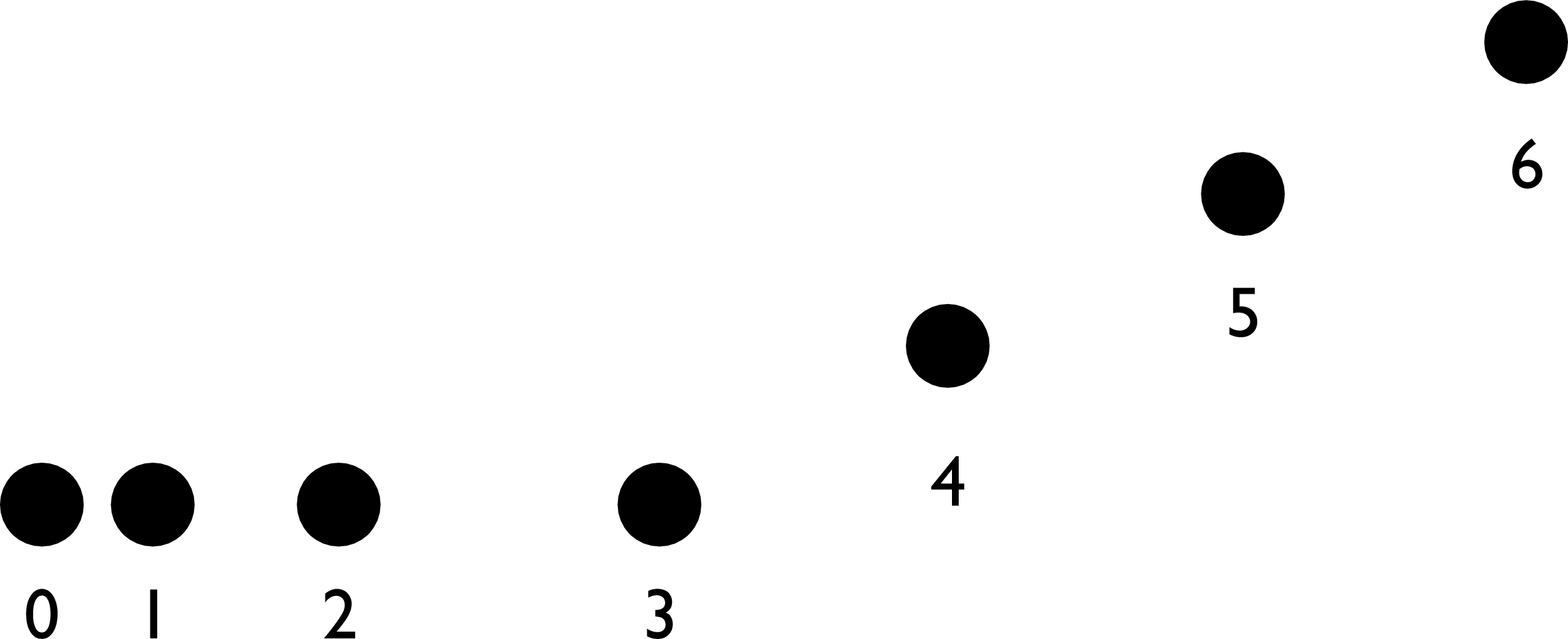Moving Creature#
A set of dots representing the position of a living creature is shown in the figure. The spots are equally spaced in time.

Long Description of image: Motion diagram of the creature.
The motion diagram consists of seven dots numbered 0 to 6. Dots 0 to 3 form a horizontal line with an increasing spacing between adjacent dots. Dots 3 to 6 form a straight line with positive slope with an equal spacing between adjacent dots.Long description ends.
Part 1#
From dots 0 to 3, is the creature slowing down, speeding up, stationary or maintaining a constant speed? Please explain your answer.
Answer Section#
The creature is speeding up because the distance between points equally spaced in time is increasing.
The creature is slowing down because the distance between points equally spaced in time is increasing.
The creature is maintaining a constant speed because the distance between points equally spaced in time is increasing at a constant rate.
The creature is stationary because the points form a horizontal line.
Part 2#
From dots 3 to 6, is the creature slowing down, speeding up, stationary or maintaining a constant speed? Please explain your answer.
Answer Section#
The creature maintains a constant space because the distance between points equally spaced in time is constant.
The creature is stationary because the distance between points equally spaced in time is constant.
The creature is speeding up because the dots form a line with a positive slope.
The creature is slowing down because the dots form a line with a positive slope.
Part 3#
Describe a physical situation this set of dots could represent. (Choose a creature and explain what it is doing from time 0 to time 6).
Answer Section#
This could describe a loon or a duck accelerating across the surface of the water before taking flight at a constant speed, about 30\(^{\circ}\) above the water.
This could describe a loon or a duck flying at a constant speed across the surface of the water before taking flight with an increasing speed, about 30\(^{\circ}\) above the water.
This could describe a loon or a duck at rest on the surface of the water before taking flight at a constant speed, about 30\(^{\circ}\) above the water.
This could describe a loon or a duck at rest on the surface of the water before taking flight with an increasing speed, about 30\(^{\circ}\) above the water.
Attribution#
Problem is licensed under the CC-BY-NC-SA 4.0 license.

